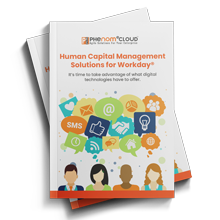
In 2008, leading talent management companies launched calibration tools for performance management. Over the past eight years, calibration has become a smooth, easy process in leading software like SuccessFactors and Workday.
Performance calibration, long espoused by management guru Dick Grote, among others, is the process where managers compare performance reviews before they finalize them. Its purpose is equal and fair application of standards across the organization. Known as “leveling” in some contexts, it is an attempt to reduce the natural biases we introduce into the evaluations we write.
The Technology Myth
As Grote explains, we have a misconception that if we only get the forms, procedures, and training right, performance management will be a comfortable process. The truth is, it will never be so because no matter what we do, one person must judge another.
Putting managers in a room and requiring them to pass judgment on each other’s ratings can be uncomfortable. Hard graders may think they are being forced to inflate ratings. Managers who rate their employees higher than others may be pressured to lower their scores. A strong personality can influence the results.
Benefits of Calibration
In spite of these difficulties, calibration has powerful benefits. Ratings are fairer across the organization. Managers become more aware of their biases, and it can be a valuable learning experience for new managers. It also reduces the risk of adverse action over fair treatment and helps defend employment decisions.
Performance Management Evolution
The past couple of years has brought us a lot of buzz about doing away with performance ratings. Many companies tried it and initially reported positive results, but many who sought to operate without ratings found that it does not work for them.
- Companies need to differentiate among performers for compensation, promotions, and employment decisions. Organizations need a numerical basis for decisions.
- Where organizations tie performance ratings and compensation together, employees have become conditioned to receiving pay for past performance. Often, the only question the employee has at review time is, How much do I get?
- In non-numerical systems, you must convert label-only evaluations to numbers to feed your analytics engines. Employees know the numbers.
In spite of predictions, we believe most companies will keep a performance rating system, and calibration will remain a valuable tool. It makes sense to make it as simple as possible while retaining its advantages.
The Right Approach
Successful calibration depends much less on the tools you use than how well you manage the process. Keep organizational dynamics in mind.
- Communicate expectations well in advance, and send reminders to ensure managers are well prepared. If you use a recommended distribution, communicate that also.
- Analyze overall rating distributions before the meeting, and be prepared to discuss what a normal distribution of ratings looks like and why. Use graphs to show central tendency and outliers.
- Train managers well. Include learning how judging others affects us.
- Make sure you have a skilled and assertive facilitator who can control the power dynamics.
- Agree on procedures and ground rules.
Performance calibration is not easy, but the benefits can far outweigh the risks if you plan well. Make the calibration session an extension of your leadership training.
References:
1. Grote, Dick. The Myths of Performance Management. Video. October 1, 2014.
Maximize ROI From Your Workday® Investments
Find out how PhenomᵉCloud can help you use the power of Workday® to make your workforce a competitive advantages.

PhenomᵉCloud is a comprehensive technology solutions provider committed to empowering businesses to overcome challenges, enhance their workforce capabilities, and achieve superior outcomes.

Leave a Comment